Qnap TES-1885U review
Qnap’s dual OS support offers businesses the best of both storage worlds
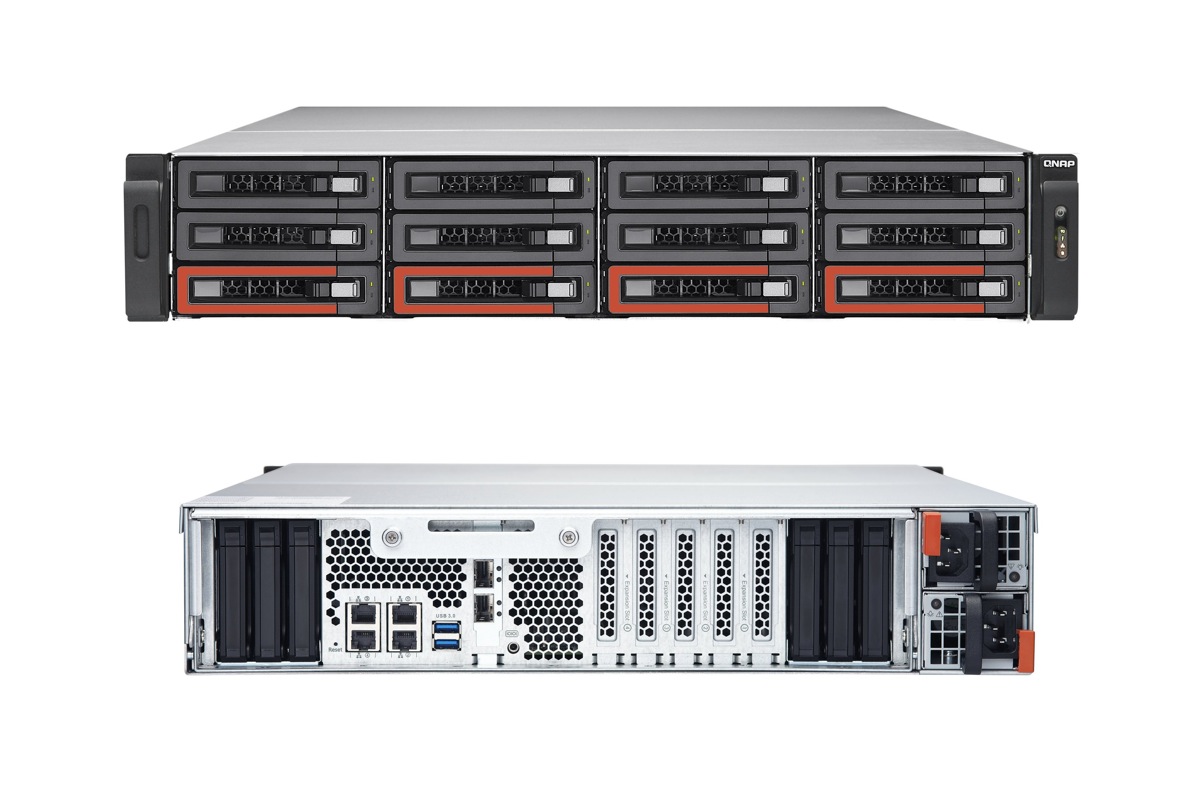

The TES-1885U is a powerful storage appliance made all the more unusual with its dual OS support - a good choice if you want an appliance with plenty of storage options
-
+
Choice of OS; Top 10GbE performance; Powerful hardware; Good value; QES ZFS data protection; QTS apps
-
-
OS swap requires full system reset; QES manual needs improving

Qnap takes versatility to the next level as its TES-1885U gives you a choice of two operating systems. With Qnap's QES software on-board, the appliance is geared up for protecting mission-critical storage while QTS turns it into a general purpose NAS server capable of running Qnap's wealth of business apps.
Based on FreeBSD, the QES software teams up NAS and IP SAN services with data deduplication, compression and thin provisioning. Using copy-on-write, its ZFS file system offers near unlimited snapshots (65,536 actually) and support for SSD read caching.
Plump for QTS and you get snapshots, read/write SSD caches and Qnap's QTier which moves data across up to three tiers comprising SSDs, SAS and NL-SAS or SATA drives. QTS is the one to go for if you want access to apps such as the Virtualization, Container and Surveillance Stations plus a heap of cloud sync and backup apps.
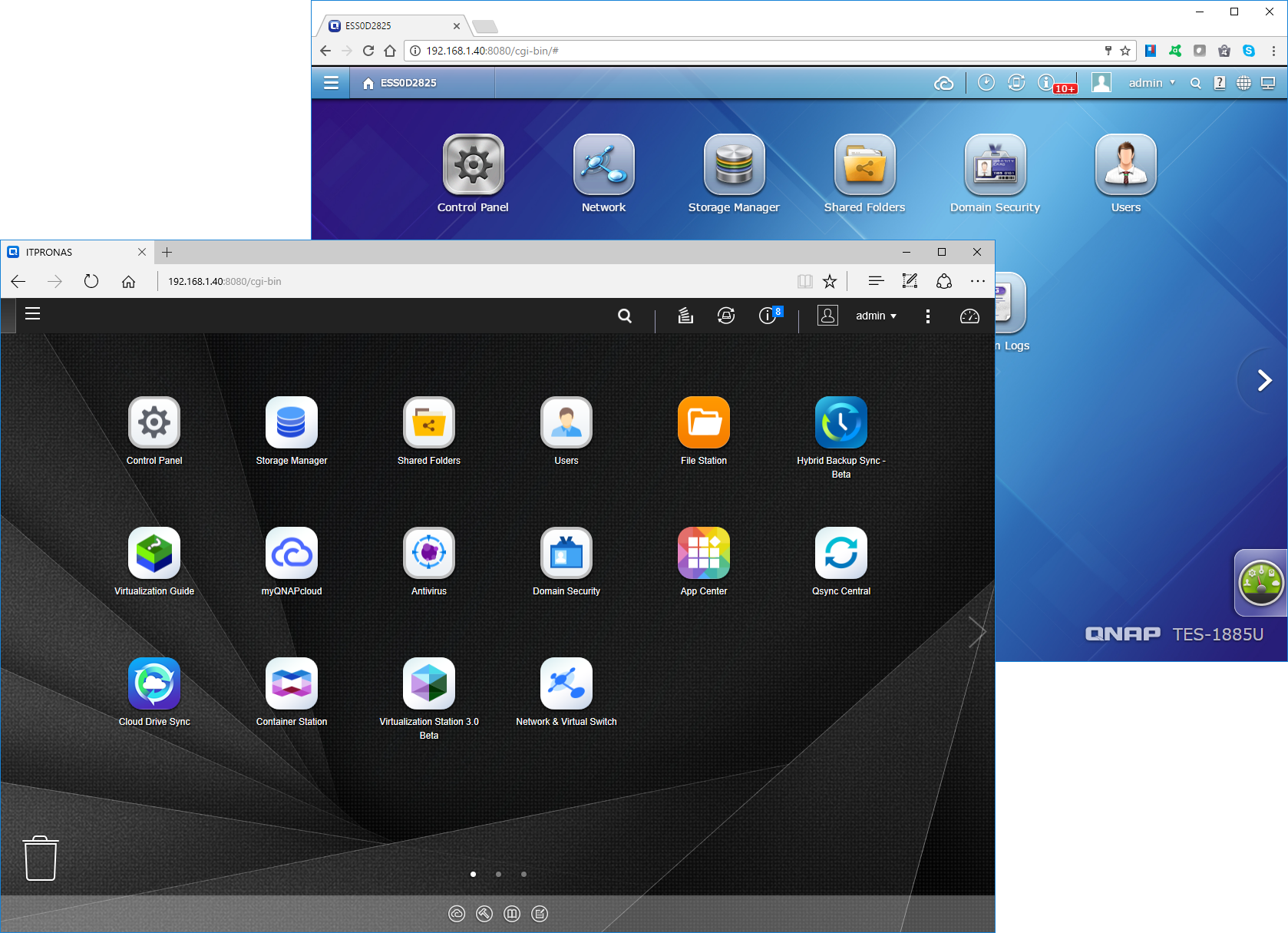
At no extra cost, the TES-1885U can run Qnap's QTS or QES software
Hardware line-up
Qnap offers plenty of choice in the hardware department. You can have a quad-core 2.4GHz or a six-core 2.2GHz Xeon D-1500 CPU and from 16GB to 128GB of DDR4 memory.
Standard features across all models include 12 hot-swap SAS3 front drive bays, six rear SATA SFF bays, quad Gigabit and a dual-port 10GbE SFP+ adapter card. Four PCI-Express slots support optional 10GbE or SAS expansion card upgrades while power redundancy is handled by dual hot-plug 450W PSUs.
QES needs at least 32GB of memory which won't be a problem for the top-dog TES-1885U-D1531-128GR on review which has 128GB. Lesser models can be upgraded as the system board tray slides out the rear for easy access to the DIMM slots.
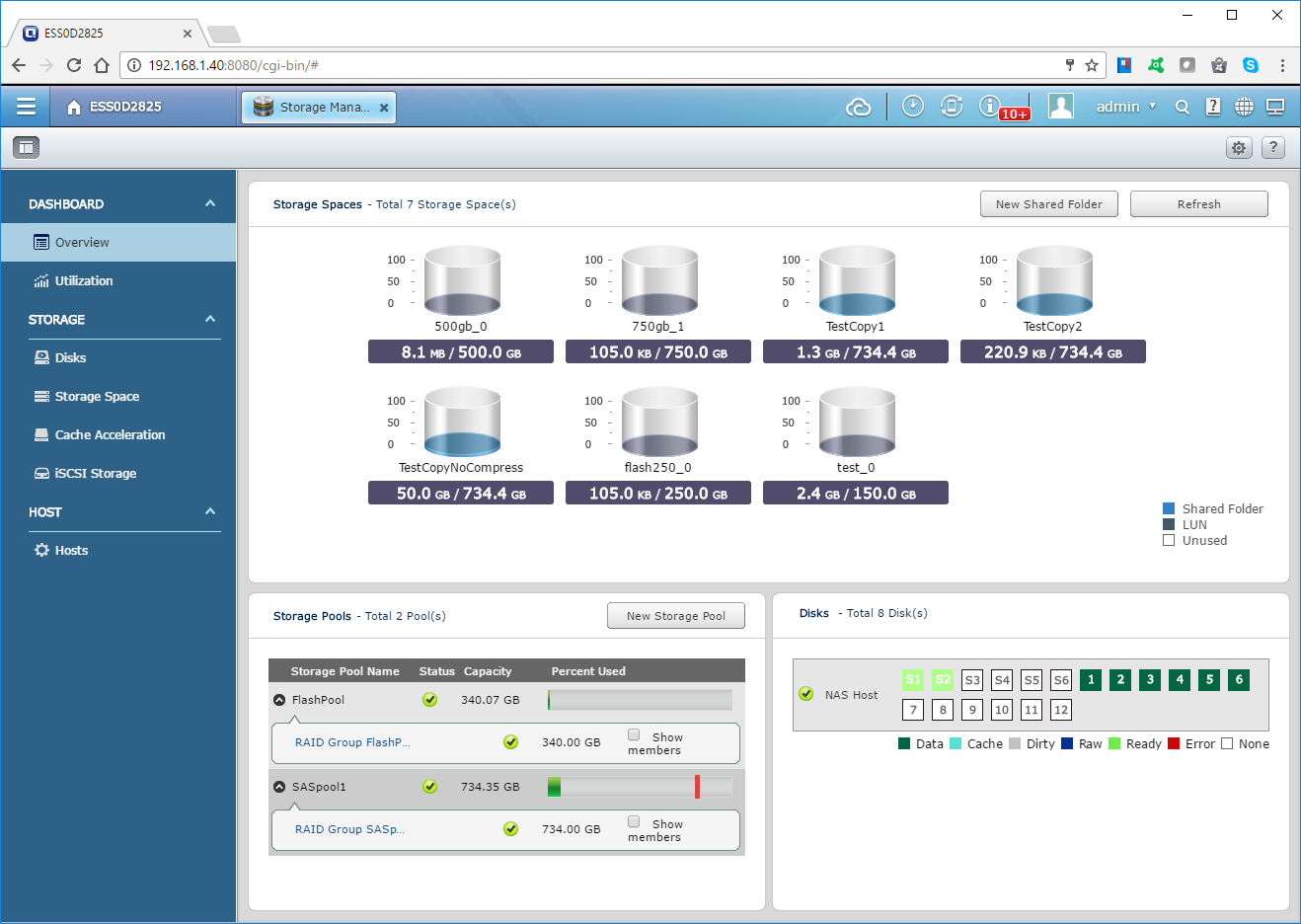
QES storage setup
We've covered QTS extensively in many Qnap reviews in IT Pro so we'll focus on QES. Installation is simple enough as the web based quick start wizard offered us the choice of loading either OS.
One proviso for QES is it must have its system disks loaded in the bays marked with orange stripes and preferably at least two for OS RAID protection. For testing, we slipped a couple of SATA SSDs in the rear bays leaving the four lower bays at the front free for general storage duties.
QES takes around 30 minutes to install and presents a web interface that's similar to QTS albeit not as feature-rich. After loading four 15K SAS SSF drives, we used the Storage Manager app to create a RAID5 pool with other options including RAID50 and 60, RAIDTP and Triple Mirror for even greater drive redundancy.
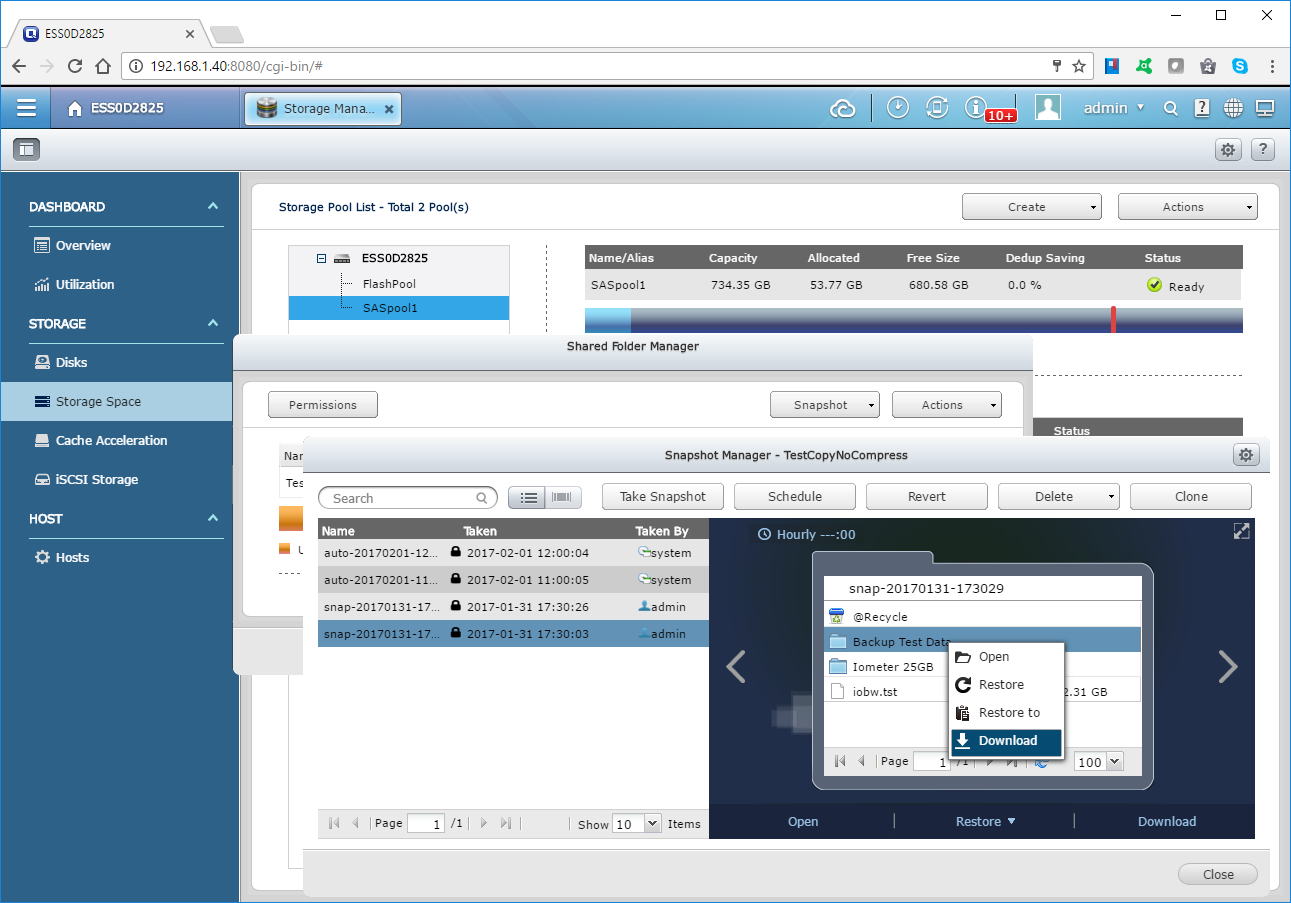
QES shares and LUNs
During share and LUN creation we could enable thin provisioning, compression, SSD caching and deduplication with the latter supporting the SHA256, SHA512 and Skein cryptographic checksums. Qnap's documentation doesn't discuss these but for heavy-duty deduplication action try the Skein hash algorithm which claims to offer higher performance.
Other advanced share features include folder encryption and WORM (write once read many). This offers a compliance' setting that stops protected folders being deleted unless the pool it resides on is removed.
QES offers good IP SAN access security as we could choose the physical network ports each LUN would be presented on and apply a host list containing details such as IP addresses and subnets or initiator names. You'll know if an unauthorised host tries to logon to a portal as the appliance sounds a warning beep and posts an error message.
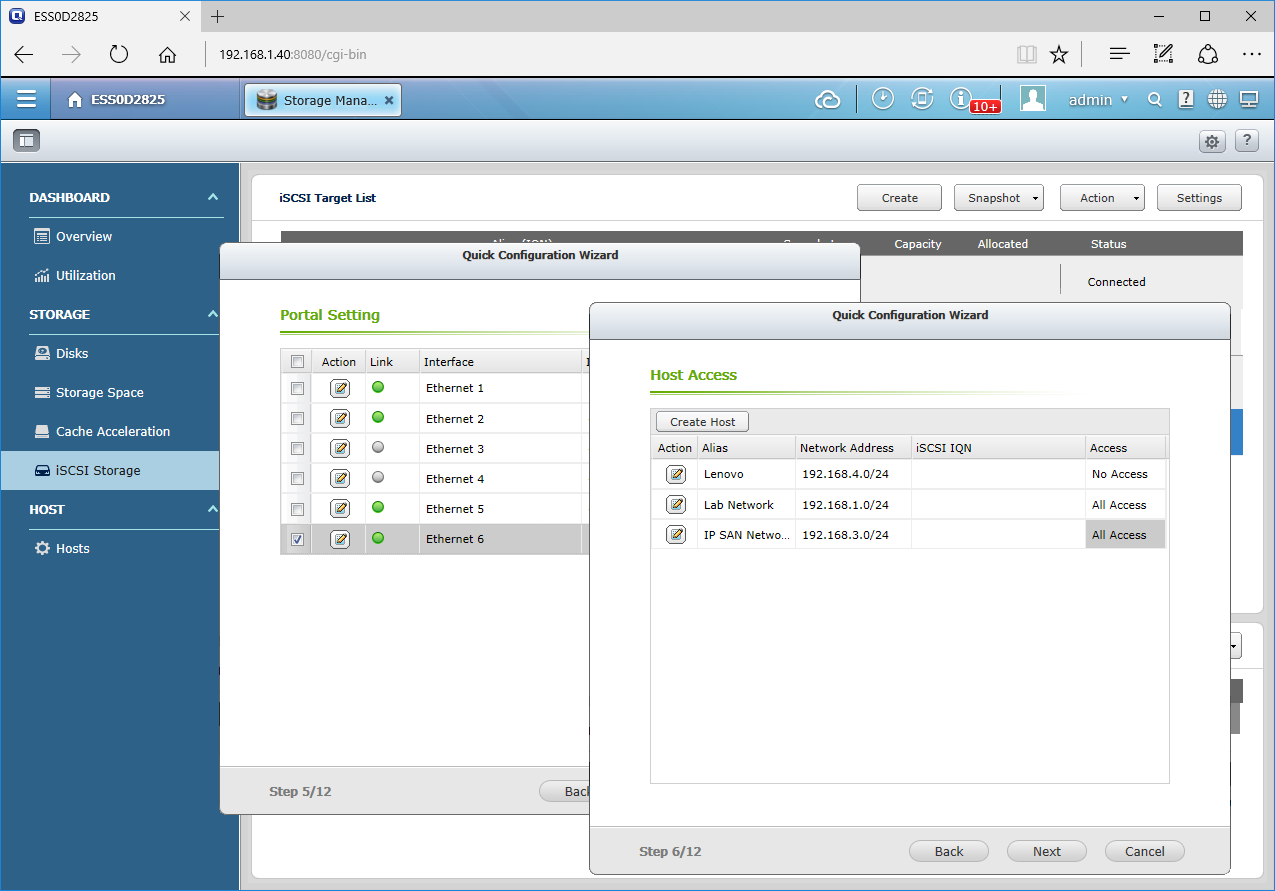
QES offers very good IP SAN access security measures
Snapshots and performance
Snapshot creation is swift as from the Storage Manager, we chose our shares and LUNs and could run on-demand snapshots or schedule them to run regularly at hourly, daily, weekly and monthly intervals. The SnapSync feature uses the Backup Station app to replicate shares and LUN snapshots to local or remote targets as often as every five minutes
Share and file recovery is just as simple as the Snapshot Manager shows the contents of the selected snapshot allowing files and folders to be recovered to their original location or downloaded. Share snapshots can also be exposed as new shares while LUNs must be disabled before they can be recovered.
To test 10GbE performance we used a Lenovo x3650 M5 Windows server equipped with an Emulex dual-port 10GbE SFP+ card. With a share mapped to the server, we watched Iometer record raw read and write speeds of 8.8Gbits/sec and 9.1Gbits/sec.
Real world copies using compressed shares were equally impressive with drag and drop copies of a 25GB test file averaging both read and write speeds of 8.7Gbits/sec. IP SAN speeds were on the money too, with a 500GB target returning Iometer read and write rates that were very similar to our NAS tests.
Conclusion
Choose your OS carefully as you can't just swap willy-nilly between them as this requires a complete system reset and full disk initialisation. However, after backing up all our data and resetting the system to default, we swapped from QES to QTS in only 15 minutes.
Businesses that want plenty of choice for their storage networks will find the TES-1885U a worthy contender. Both QES and QTS offer an impressive range of storage features with data protection a high priority and if you don't like one OS you can swap over to the other at no extra cost.
Verdict
The TES-1885U is a powerful storage appliance made all the more unusual with its dual OS support - a good choice if you want an appliance with plenty of storage options
(As reviewed)
Chassis: 2U rack
CPU: 2.2GHz 6-core D-1531 Xeon
Memory: 128GB DDR4 RDIMM
Storage: 12 x hot-swap SAS3/SATA III LFF/SFF, 6 x SATA III SFF
Array support: (QTS/QES) RAID0, 1, 5, 6, 10; (QES) 50, 60, RAIDTP, Triple Mirror
Network: 4 x Gigabit; dual-port 10GbE SFP+ PCIe card
Expansion: 1 x PCIe Gen 2, 3 x PCIe Gen3 slots
Other ports: 2 x USB 3
Power: 2 x 450W hot-plug PSUs
Management: Web browser
Warranty: 5-year limited
Get the ITPro daily newsletter
Sign up today and you will receive a free copy of our Future Focus 2025 report - the leading guidance on AI, cybersecurity and other IT challenges as per 700+ senior executives
Dave is an IT consultant and freelance journalist specialising in hands-on reviews of computer networking products covering all market sectors from small businesses to enterprises. Founder of Binary Testing Ltd – the UK’s premier independent network testing laboratory - Dave has over 45 years of experience in the IT industry.
Dave has produced many thousands of in-depth business networking product reviews from his lab which have been reproduced globally. Writing for ITPro and its sister title, PC Pro, he covers all areas of business IT infrastructure, including servers, storage, network security, data protection, cloud, infrastructure and services.
-
 Global cybersecurity spending is set to rise 12% in 2025 – here are the industries ramping up investment
Global cybersecurity spending is set to rise 12% in 2025 – here are the industries ramping up investmentNews Global cybersecurity spending is expected to surge this year, fueled by escalating state-sponsored threats and the rise of generative AI, according to new analysis from IDC.
By Ross Kelly Published
-
 ‘Phishing kits are a force multiplier': Cheap cyber crime kits can be bought on the dark web for less than $25 – and experts warn it’s lowering the barrier of entry for amateur hackers
‘Phishing kits are a force multiplier': Cheap cyber crime kits can be bought on the dark web for less than $25 – and experts warn it’s lowering the barrier of entry for amateur hackersNews Research from NordVPN shows phishing kits are now widely available on the dark web and via messaging apps like Telegram, and are often selling for less than $25.
By Emma Woollacott Published
-
 Redis unveils new tools for developers working on AI applications
Redis unveils new tools for developers working on AI applicationsNews Redis has announced new tools aimed at making it easier for AI developers to build applications and optimize large language model (LLM) outputs.
By Ross Kelly Published